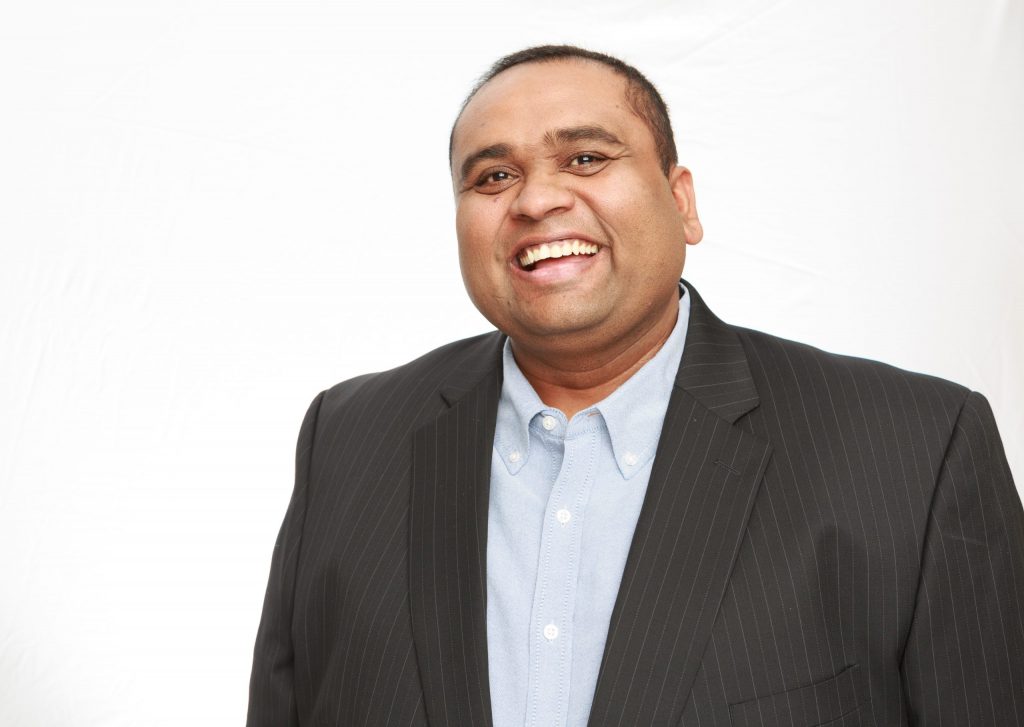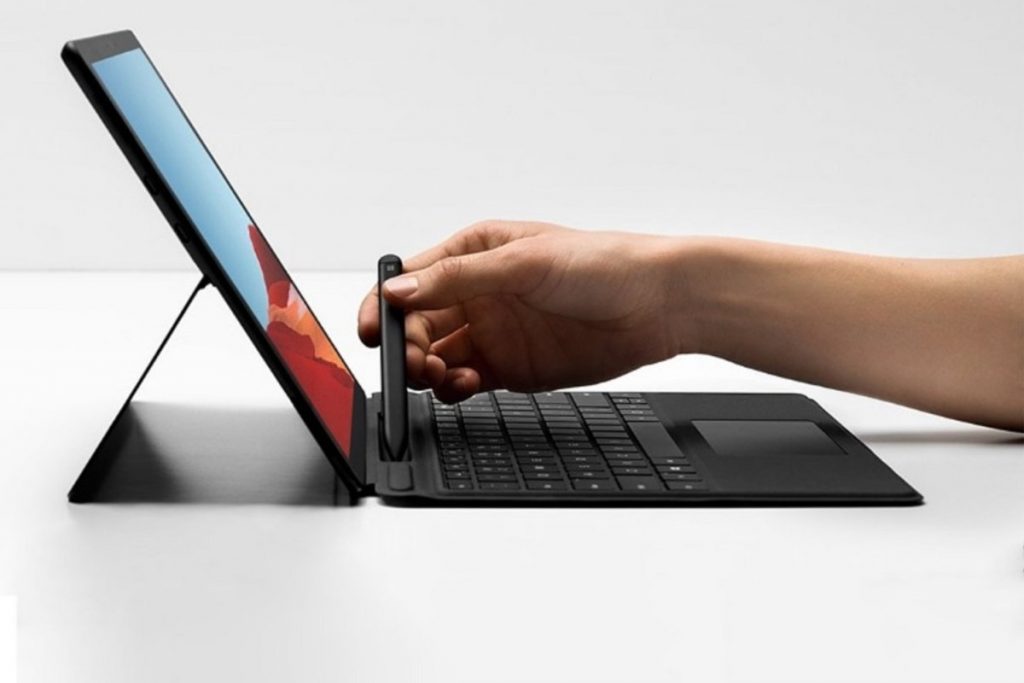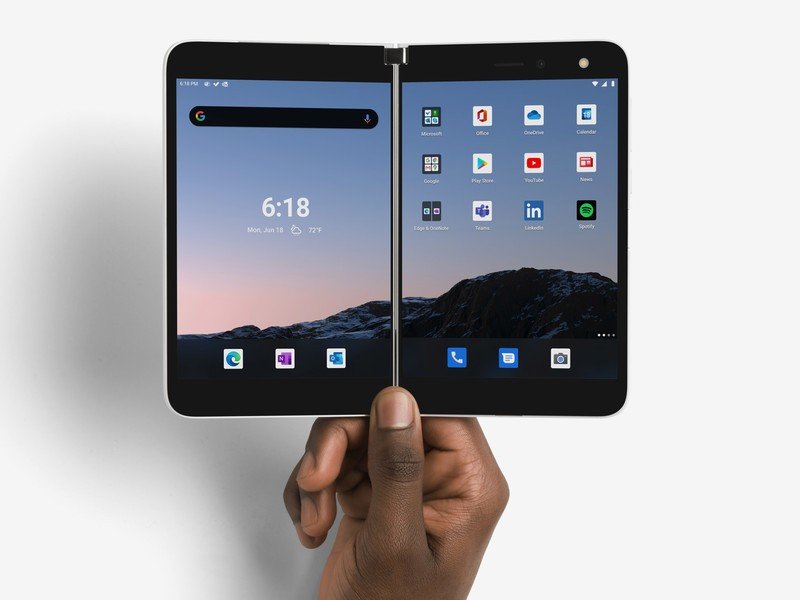
Behind his big smile and sentence-punctuating laugh, Chirag Shah hides a confident vision of the future. He’s eager to talk about his time at Microsoft and thrilled to discuss what successes he can that his Device Software/Firmware Team has supported. But he’s also quick to offer one caveat: What they do is like something out of a sci-fi novel, playing with tomorrow’s life-changing technologies, today.
“Personally, I think of us as product ninjas,” he says of his small, agile, stealthy team. “When there’s a difficult product that needs to be built, when there’s a solution that needs to be put together, we are the hyper-efficient ninjas who come in, hack and whack, do what is needed, and get it going.”
As such, Shah has products in his hands right now that won’t be available to the public for as much as five years. His silicon specialists team goes beyond the cutting edge, augmenting sister teams in Redmond and China, and also empowered to deliver independent products and designs. As he likes to say, if you have “extremely sticky issues with security, manufacturing, and scale,” it’s time to call in the ninjas.
“We have an extremely deep bench of technology experts who we can build products around and rally people behind,” he says of his team. “It’s not about knowing how to hammer; it’s knowing where to hammer. That’s where our uniqueness comes in.”
How we solve
Shah earned his reputation as an outside-the-box engineering leader during a decade at Qualcomm, providing architectural oversight for its products across the Windows ecosystem. Before that, he worked at several startups and attained his M.S. in Electrical Engineering from USC after moving to the U.S. from Mumbai.
“I consider myself a career startup person,” he muses. “Before Microsoft, I’d gone through multiple companies I built, sold, and even bankrupted. That’s my background, and I’ve learned it’s all about one question: How do we solve?”
When he joined Microsoft in June of 2018, it was with an eye on his knack for building high-impact teams across multiple geographies. Shah makes it a point to celebrate both a team’s successes and failures, believing that they can quickly learn from any mistake — and never repeat it. Microsoft tasked him with bringing that mentality to a small, agile, hand-assembled team in the heart of Silicon Valley. In this place, Shah can find plenty of like-minded “ninjas” who excel at ramping up on things quickly, working efficiently, and getting things done.
“The intention was to see how we could use a lot of the custom silicon we were making at the time,” he recalls of a journey that, after several pivots that included Azure troubleshooting, led to Shah getting back to his roots. “We started there and said what can we build, and that’s when we started looking at the custom silicon at Qualcomm.”
The result was a 2-in-1 tablet-and-laptop combo that debuted in late 2019 and recently returned with a faster processing, higher-end version: The Pro X.

“It’s super cool, super-thin — one of the thinnest P.C.s that exists out there,” Shah says like a proud parent. “It also has a fantastic battery life; you can take it with you all day and don’t have to worry about it.”
Bringing a product like the Surface Pro X to market is no simple task, which is why it took a team of ninjas to help make it happen.
“We’ve been able to deliver products with a team of three people where ordinarily you would need a team of ten to twelve, simply because of a scrappy spirit and knowledge of technology that everyone brings to the table,” Shah says of his team.
No formula for the future of devices
Last year, Shah’s team helped shepherd the Microsoft Duo across the finish line. It’s an ambitious product that is so much more than a phone — as evidenced by its connected screens, allowing the user to multitask in two apps at once. Offering more selection options for the end-user and harnessing the power of productivity apps, the Duo is a critical step to empowering a new vision of our future. It’s also the kind of launch where Shah’s team excels.
“Very often, what happens with teams that are deeply entrenched is that they have a set formula, and they try to apply that formula,” he explains. “Deviation results in error. In our case, what happens is we don’t have a formula; we have a workshop. If something needs building, people roll up their sleeves and build it without a blueprint. That’s the difference that allows us to do what we do.”

Which isn’t to say that it was easy. “We had an interesting problem where the provisioning of keys was not working as expected,” Shah recalls. “This was because on Duo we enhanced the platform security to lock down some of the low-level partitions, and that violated the Android assumptions. We came up with a rather elegant Simlink idea, however, that took care of both our requirements.”
Similarly challenging was the development of the Surface Pro X, which was unlike anything else on the market upon its release. “This was one of the most aggressive thermal and mechanical designs in the market,” he recalls of his team’s mission. “While working through the commercialization phase, we had to deal with new power states for touch controller as well as creating new low-level boot paths to ensure that the stability for the platform would not be impacted. Though running on ARM, it is a Windows machine, and we had to solve for assumptions because ARM SOCs are built for mobile-first.”
Comparing the two, he adds: “Both of these are examples where there is no playbook. As the team that jumps into the v1 for most things, we are the ones who are tasked with writing a playbook for situations like this.”
Getting scrappy
When you specialize in such long-lead development, incoming problems can often seem epic in scale and without an apparent answer. So, Shah tends to look for team members who are agile, forward-thinking, and unafraid to stumble from time to time.
“There’s an amount of can-do, getting it done attitude that is a core component of my team. Every single person needs to be an expert in at least one area. It may not be the same area; it may not be an area we can use directly. But it has to be an area that is at least adjacent,” he explains. “It makes sense to hire these deep domain experts because around these experts; you can build products and solutions.”
When you bring together such a diverse group with a wide array of successes (and failures) to draw upon, it turns a small team into a powerhouse.
“Building these projects is a fascinating and exciting process,” he explains. “The coolness comes from figuring out how we’re going to make progress, even when there is no hardware available. There are a lot of people who can write software with a lot of hardware, but very few who can write software with no hardware, and be scrappy about it.”
Shah is also fully aware that you have to convince this diverse team of experts that they are working on solutions to solve our future problems.
“The truth is, it’s all about the opportunities and people having fun,” he says. “People generally stick around for two reasons: Whatever they’re doing needs to be fulfilling, and the people they’re working with need to be nice people. And right now, we have a happy mix of really nice people, and a great product portfolio which is keeping people challenged and engaged.”
But ultimately, Shah says, a ninja knows when they’ve found their ideal dojo.
“Here, you get to play with the best toys before the rest of the world even sees them,” he says. “It takes a lot of work to bring something of this caliber and quality to the market. Being there for that journey is a biggie. If that resonates with you, come along for the ride.”
If you’re interested in joining a team of product ninjas focused on delivering devices of the future, opportunities can be found here: https://aka.ms/MicrosoftBayAreaCareers.



